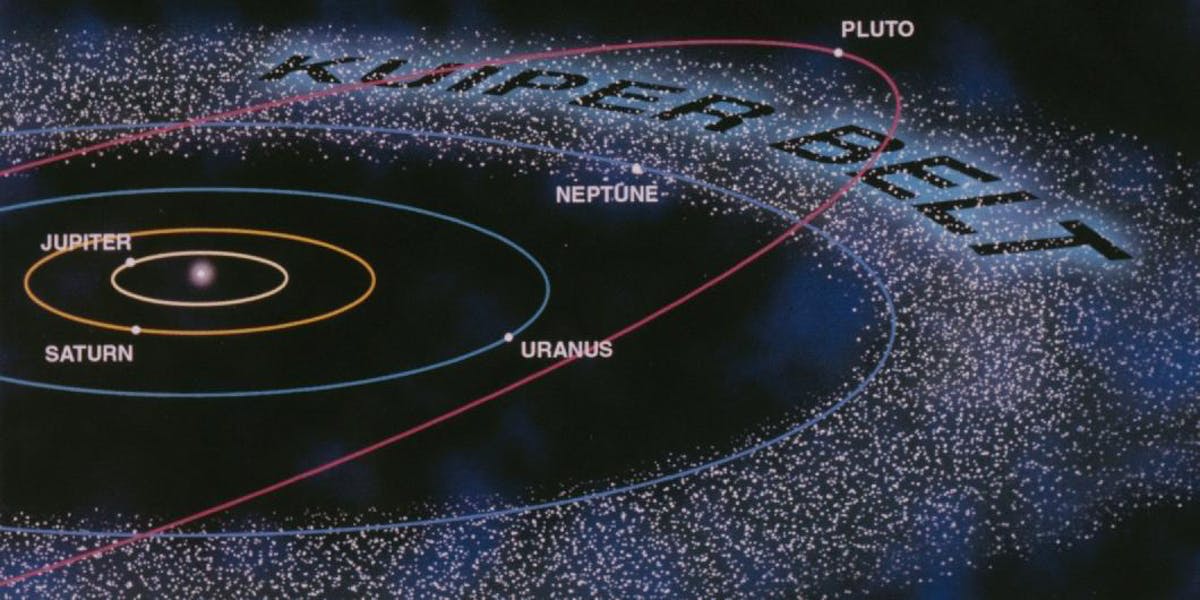Astronomers have been suspecting, or at least suggesting, the presence of one, and possibly even several remote planets around the Sun. However, our terrestrial telescopes can not see these objects through a dense ring of dust and stones surrounding the internal boundaries of our system. This ring has the official name – the Kuiper belt.
The results of new observations, published in the last issue of the journal Astronomical Journal, suggest that the boundaries of the solar system can be “drifted by an unknown and yet invisible object of the planetary mass.” This mysterious cosmic body, as the scientists write in the pages of the journal, controls the peculiarity of the orbits and behavior of some objects of the Kuiper belt left after the final formation of the solar system.
Apparently, at least judging from the illustration below, to consider what is really behind the Kuiper belt is really difficult.
Astronomers Cat Wolk and Rena Malhotra from the Lunar Planetary Laboratory of the University of Arizona report that they were interested in the peculiarity of the inclination of the axis of certain objects of the Kuiper belt, which differs from all other objects inside the solar system. According to researchers, the cause of this discrepancy may be a certain planetary body the size of Mars.
“The only reasonable explanation of the phenomenon of the inclination of the axis of the objects observed by us, as our results show, may be the presence of some invisible mass for our eyes. According to our calculations, something with the mass of the planet Mars changes the angle of inclination of some objects of the Kuiper belt, “- commented Wolf.
Even if it’s a planet, it’s invisible in our telescopes because of the tight density of the Kuiper belt. About its existence, this planetary object hints at its effect on the most distant objects of the belt
To arrive at such conclusions, the scientists carried out calculations and analyzed the angle of inclination of more than 600 objects of the Kuiper belt.
“Imagine that you have a lot of fast spinning tops and each of them you give a small impulse – a slight push. If you take a picture of them at that moment, you will see in the pictures how the axis of their rotation changes a little, but on the average will be directed toward the gravitational field of the Earth, “Malhotra explains.
Scientists also had to determine how large the object should be in order to exert such a gravitational influence. According to the result of the analysis of the figures, the researchers concluded that the size of the planet (if this is, of course, the planet) is equal to something average between the size of the Earth and Mars. In addition, judging by the received data, the slope of the axis of this object is about 8 degrees, which, in turn, can indicate that there are practically no seasonal changes on the surface of this object.
Nevertheless, researchers do not exclude other options. For example, bodies that affect the inclination of the axis of Kuiper belt objects may be several. And perhaps, they are completely absent, and the reason for the peculiarity of the slope of the Kuiper belt objects can be a passing star in the distant past in close proximity to our system.
Cat Wolf, Rena Malhotra and many other astronomers expect data from the Pan-STARRS mission and the Big Synoptic Survey Telescope, which will begin work in 2022 and will finally provide an accurate picture of what is happening on the outer boundaries of our solar system. Therefore, the only thing that remains now is to wait.













